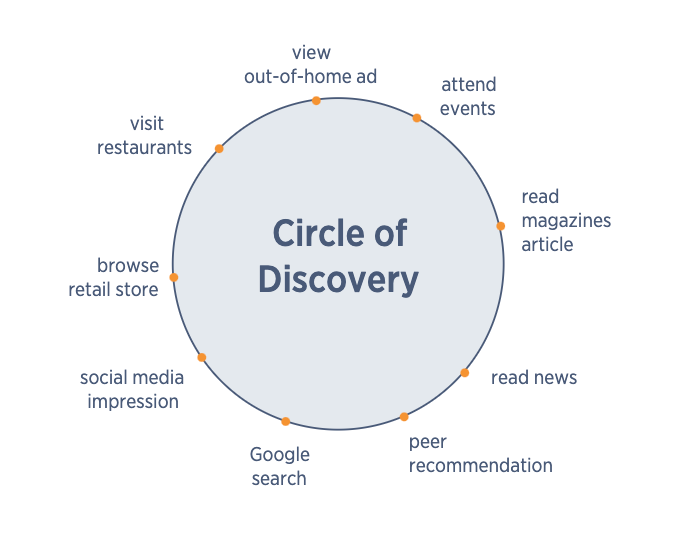User Journey Management for Wineries
This article was originally published on Lithica Wine Marketing.
With the shift from foot traffic to online traffic, direct-to-consumer (DTC) and e-commerce have become the buzzwords of the last year. It has never been more clear that wineries do not need to rely on their tasting room alone to have a robust DTC program. Digital offers wineries the opportunity to engage and delight customers at every interaction of their journey. But we haven’t been doing a great job – yet.
This is where the field of customer experience (CX) comes in. CX has been around for over a decade, but the profession has only gone mainstream in the past five years. With technology fundamentally changing the way we live, work, and relate to one another, the average consumer is using up to 10 channels to communicate with a business. The purpose of CX management is to identify and analyze all the points of entry throughout a user journey, and the garnered insights can be used to implement programs that can optimize a customer’s experience, grow sales, and build brand affinity.
Early adopters who believed in the strategic significance of CX led the way with digital and invested in consumer behaviour research a decade ago. And many of these players have seen a surge in online sales performance in recent years. Nike, for example, has been the leader in digital in their field for over a decade, which has allowed them to be proactive during the pandemic. Even when stores began to reopen, Nike reported an 82% increase in online sales during June-August 2020.
This being said, there are less than a handful of wine companies that can call themselves UX early adopters. Need to catch up? Let us bring you up to speed.
What is a customer journey?
On the surface, a customer journey is a simple concept: a customer becomes aware of a wine or winery, finds the product offering appealing, and proceeds to buy it.
The most common user journey has a linear framework and a simplified version could look something like this:
User journey management: simplified version of a linear model
Straightforward enough.
Over time, different models emerged. To keep up with modern trends, we spoke to a handful of data scientists and CX experts to garner new perspectives on how to approach user journey maps.
We found the cyclical model is gaining popularity. This approach views the journey as interconnected circles:
Circle of Discovery
Circle of Conversion
Circle of Advocacy
Circle of Growth
Each circle contains many points of entry and exit, and mapping them out allows a winery to gain insights into common problems. What goes through a consumer’s mind at each touchpoint? What are their “pain points” and “gain points” at each interaction? How can we come up with solutions that can turn any customer into a brand advocate?
Circle of Discovery
This is the stage where a customer discovers your brand via different points of entry such as advertisements, earned media exposure, and peer recommendations. This circle may look like this:
User journey management: circle of discovery.
The Circle of Discovery isn’t just about outlining tactics to build brand awareness. It’s also about understanding what our customer is thinking and feeling at this stage. And the answer probably isn’t, “I want to drink a 90-point wine.” It could be:
What wine pairs well with my dinner?
Which wineries should I visit on my trip to wine country?
What organic wine should I buy?
Circle of Conversion
Brand awareness doesn’t pay the bills, though. Building an audience is just the start. What’s next? It is time to take the relationship to the next level by encouraging interaction and purchase. Common points of entry may include a website visit, social media follow, newsletter subscription, product trial and eventually a purchase:
User journey management: circle of conversion
At this stage, our customer may be thinking:
Will I get my wine on time?
Do I need to pay for delivery?
What will my friends think of my choice?
Circle of Advocacy
Congratulations, the customer made a purchase. No doubt this is a moment worth celebrating, but do not stop there. There is more work to be done for a customer to become and stay your advocate. Here, customers may enter the circle of advocacy through joining your wine club or sharing your content.
User journey management: circle of advocacy
As our customer journeys into the circle of advocacy, they may ask themselves:
What benefits will I receive if I join the wine club?
Will I be appreciated for sharing my wine experience on social media?
Will I be rewarded if I refer a friend to the wine club?
Circle of Growth
The final step is to close the loop by leveraging the power of consumer advocacy to encourage new discoveries, new conversions, and so on. The key is to acknowledge that customer journeys are always evolving and to uncover new opportunities that can help us grow that circle.
User journey management: circle of growth
Wine and CX
The relationship between wine and hospitality is an intimate one, almost symbiotic. Wineries are natural specialists in hospitality. If they can apply the same level of energy and meticulousness to their online customer experience – by creating compelling customer journeys and managing digital CX the same way they manage their hospitality programs – the virtual wine world has have the potential to create more revenue and brand advocates.
Sources
Gartner Surveys Confirm Customer Experience Is the New Battlefield
Closing the Customer Experience Gap
40 Customer Service Statistics To Move Your Business Forward
About Lithica Wine Marketing
Lithica is a consulting agency led by Geoffrey Moss, Master of Wine, founded to develop strategies for wine brands that want to stand out and sell more wine.
Learn more at lithica.wine






